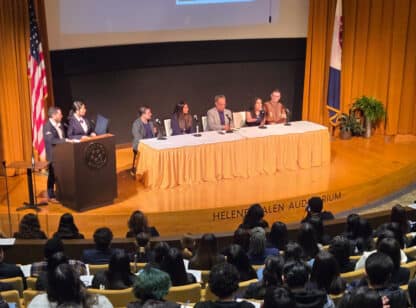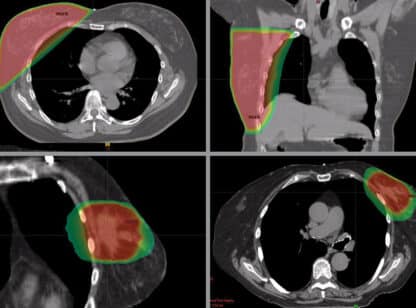Health care in United States is very costly. According to the Organization for Economic Cooperation and Development (OECD), the U.S. spent 17.1% of its Gross Domestic Products (GDP) on health care in 2013. A report published by Common Wealth Fund last year states that the U.S. spends most of its money on medical technology, procedures and prescription drugs. The high health care cost is causing wage stagnation, personal bankruptcy and budget deficit.
The U.S. has the highest infant mortality rate and lowest life expectancy among developed nations and, according to The Institute of Medicine, our poor health is across the board including those in upper economic groups, non-smokers and non-obese. Americans visit their physicians less often and take fewer steps to prevent chronic illnesses compared to other developed countries.
Now is the time to pay attention to population health and preventive care. Prevention saves lives, increases productivity and reduces health care costs. A well woman visit is a perfect example of preventive care. The United States Preventive Services Task Force (USPSTF), Center for Disease Control (CDC), National Institutes of Health (NIH), and American College of Obstetrics and Gynecology (ACOG) all have specific recommendations because certain diseases are unique to women and other diseases affect them differently. According to the NIH, women are more likely to die of heart attack and are more prone to depression, anxiety, osteoarthritis and urinary tract infections.
The well woman visit is an annual visit to the health care provider for a woman to address all pertinent issues. According to ACOG, the visit includes contraception counseling, cancer screening, vaccination, health screening for chronic illnesses (hypertension, diabetes, osteoporosis and more), depression screening, STI (sexually transmitted infections) screening, sex concerns, weight control, issues with menstrual periods, preconception counseling and other issues (menopause, urinary incontinence, relationship problems including domestic violence). ACOG also recommends that girls start their gynecological visits at age 13 to 15.
Screening protocol is different for the periods of adolescence, child bearing years, and peri- and post-menopause.
Adolescence
For the 13 to 18 age group a pelvic examination is optional, but testing for Chlamydia is recommended for sexually active girls. Physical examination emphasizes evaluating proper development of sexual features. Vaccination includes tetanus, diphtheria and whooping cough and the booster every 10 years. Human papilloma virus (HPV) vaccination is recommended from age 9 to 26 and new Gardasil 9 prevents 90% of all cancers caused by HPV. Chicken pox vaccine is recommended for those who never had it or with no evidence of immunity found at the visit. Vaccination for measles, mumps and rubella (MMR) is recommended if the patient has not received it in past.
Child-bearing Years
Wellness exams for ages 19 to 39 include general history and more discussion on sexual practices. Physical exam specific for this group is to start breast examination in 1- to 3-year intervals after age 20. Pelvic examination is optional. Pap smears start at age 21 and every three years for low risk population. HPV screen is not recommended until age 30; gonorrhea and Chlamydia testing is recommended for sexually active women up to age 25.
Perimenopause
For ages 40 to 64, the wellness exam includes general history with examination of prolapsed pelvic organs, annual breast examination including examination of auxiliary lymph nodes, and annual pelvic examination. Pap smear screening is recommended every three years; however, if HPV co-testing is done with pap, the screening can be done every five years. Colon cancer screening is recommended at age 50, but screening for colon cancer for the African-American population should begin at age 45. Diabetes screening is recommended every three years. Annual mammograms are recommended after age 40, although this recommendation differs with different institutions. It is very important to discuss with your health care provider how often to have it done based on your risk factors and breast structure.
Menopause
For ages 65 and over, additional screening of bone mineral density should be done every other year. Discontinue Pap after age 65 if three Pap smears or two Pap and HPV co-testing are negative in the last ten years. Colorectal cancer screening every ten years, diabetic screening every three years, lipid profile every five years, thyroid screening every five years, and annual mammogram are recommended. Vaccination includes annual flu shot, shingles shot at age 60, and one-time pneumococcal vaccination for low risk population.
The annual visit should be individualized based on your needs and health risk factors. To get the most out of your visit and achieve the best health, be an active member of your health care team. Prepare and actively participate in your visit with your health care provider. Be open and provide correct information to your health care provider. Choosing the right provider who understands you well and with whom you feel most comfortable discussing your personal health needs will help you achieve the best health.
S. Ava Mahapatra, M.D., is board-certified in obstetrics and gynecology and can be reached at Fleur Women’s Health (760) 779.5511 or at www.fleurhealth.com. She is also a member of Desert Doctors. For more information visit DesertDoctors.org or call (760) 232.4646.
















































Comments (0)